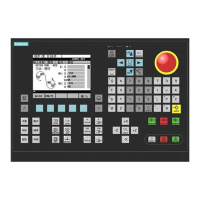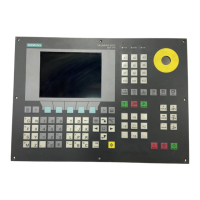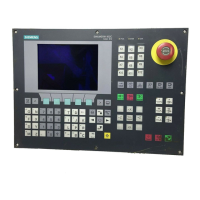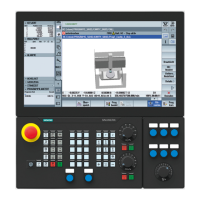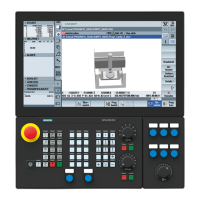Axis couplings
9.4 Electronic gear (EG)
Job planning
526 Programming Manual, 07/2010, 6FC5398-2BP40-0BA0
9.4 Electronic gear (EG)
Function
The "Electronic gear" function allows you to control the movement of a following axis
according to linear traversing block as a function of up to five leading axes. The relationship
between each leading axis and the following axis is defined by the coupling factor.
The following axis motion part is calculated by an addition of the individual leading axis
motion parts multiplied by their respective coupling factors. When an EG axis grouping is
activated, it is possible to synchronize the following axes in relation to a defined position.
A gear group can be:
● defined,
● activated,
● deactivated,
● deleted.
The following axis movement can be optionally derived from
● Setpoints of the leading axes, as well as
● Actual values of leading axes.
Non-linear relationships between each leading axis and the following axis can also be
realized as extension using curve tables (see "Path traversing behavior" section). Electronic
gears can be cascaded, i.e., the following axis of an electronic gear can be the leading axis
for a further electronic gear.
9.4.1 Defining an electronic gear (EGDEF)
Function
An EG axis group is defined by specifying the following axis and at least one, however not
more than five, leading axis, each with the relevant coupling type.
Requirements
Prerequisites for defining an EG axis group:
It is not permissible to define an axis coupling for the following axis (or an existing one must
first be deleted with
EGDEL).
Syntax
EGDEF(following axis,leading axis1,coupling type1,leading
axis2,coupling type2,...)
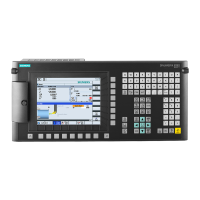
